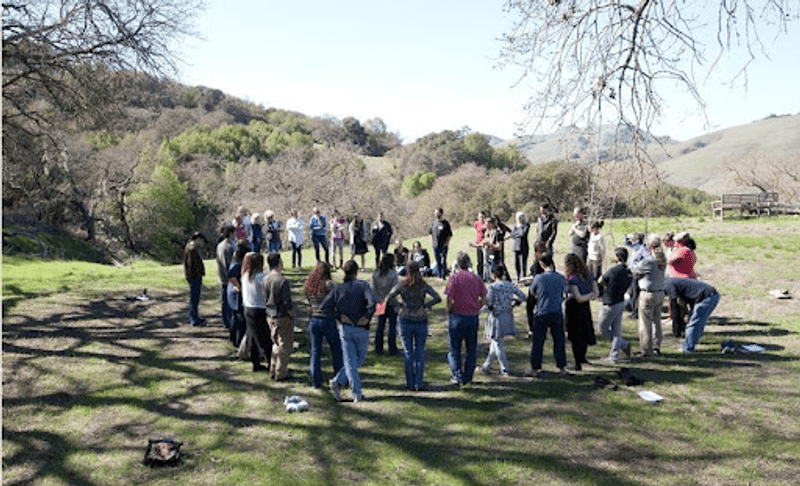By now most people probably understand why a back-up power source is a necessity in these times.
In California, power shutoffs are routinely used by energy giants to help mitigate the start of wildfires during periods of extreme weather. In Texas, a severe snowstorm caused the power grid to fail statewide. Hurricanes are increasing in the Southeast and Gulf Coast. And what about the imminent threat of big earthquakes?

Many options for back-up power sources exist today, but they aren’t always practical or accessible.
People with higher income and property ownership can install solar panels along with large battery systems (like the popular Tesla Powerwall) to switch off from the grid when needed.
The cheapest option is a traditional generator fueled by either gasoline or propane. These can cost anywhere from $350 to more than $3,000 for portable models. They are also loud, pump out fumes and can explode.
Many options for back-up power sources exist today, but they aren’t always practical or accessible.
In my opinion, portable solar generators are the best option for most of us.
These are not so much generators as they are batteries. They can be recharged using solar panels, standard wall outlets, or even your car battery. They’re portable, quiet and renewable when recharged by the sun. Best of all, they can be used indoors (where you need them most) since they don’t emit any fumes.

Cost depends on capacity, but consumer models can cost upward of several thousand dollars. Or, you can build a DIY model for a bit less.
Those of us on the power grid don’t need a generator everyday, but it’s nice to have access to one in case an emergency or disaster strikes. Unfortunately, many folks who are most vulnerable to power emergencies can’t afford to invest in such pricey items.
That’s where the power of collective ownership and community networks come in handy.
Five Steps for Starting Your Own Back-up Battery Collective
1) Choose the people you want to be in a Collective with, and who will get to use your batteries.
Perhaps you want to set up this group for your neighborhood, for friends and family over a wider geographical area, or to specifically serve frontline communities. Determine if you are just sharing equipment between yourselves, or intend on also supporting others in the wider community or area who may need help during emergencies.
Running a Battery Collective is not quite like most mutual aid projects where you are sourcing materials to distribute to one another without needing to have them back. The “mutual” part is the building relations and power between folks, and not about exchanging material goods back and forth. Batteries owned by your Collective, however, are valuable, and need care, maintenance and must be returned in the same usable condition. You’ll want to consider that as you decide who will have access to the Collective’s equipment.
2) Assess what types of emergency and disaster scenarios your collective is preparing for.
Would everyone in your Collective lose power all at once in those scenarios? That might require you to diversify the folks within the Collective, or those being served, so that not everyone needs the batteries at the same time. Also, assess what everyone’s energy needs will be during a power emergency. Because these batteries are not as powerful as gas generators, it’s best to stick to absolute essentials only, such as refrigerators, phones, medical devices, etc., especially if the batteries will need to be passed around frequently.
3) Determine what kind of batteries and how many your Collective needs, especially considering your financial situation.
There are many consumer solar “generators” on the market these days with varying capacities. Popular models are engineered as encased portable units with convenient handles, plugs, ports and easy interfaces, and can be recharged using a variety of power sources. They also tend to be as light as possible, with most under 40 pounds (some way under and some a bit over). You can also get proprietary solar panels for each type of battery system, which are also designed to be lightweight and as portable as possible. (After all, these units were originally geared towards off-grid nomads dwelling in tiny houses, vans and RVs.)
Reviews of many popular solar-battery models are readily accessible online. You can also search for beginner-friendly tips on which devices these batteries can power, their typical lifespans, and other necessary info.
Another option is creating your own systems DIY-style. This option can be cheaper, depending on what components you use, but these batteries will likely be heavier, less portable, and much less user-friendly for the layperson. And of course, you’ll need somebody to build them. Relatively easy-to-follow tutorials for a project like this can be found on YouTube.

Key questions to consider: How many batteries will you need within your Collective? How many can you afford or fundraise for? Will you buy the solar panels too?
4) Figure out the infrastructure.
Where will the batteries live? Who will keep them charged up during non-usage times? How will they be charged between uses, especially during an emergency when another person may need it soon? (For example, can you recharge with solar panels if you have those, or pass the batteries over to someone with grid power for outlet charging?) In times of need, how will you communicate with each other, especially if there’s a grid failure? Who will deliver the batteries, or pick them up?
Your Collective will also need a decision-making structure. Depending on how many folks are involved, and their interest level, you may want to keep this very nimble, with a simple process and lots of flexibility. Or your group may need more detailed processes and agreements. If your Collective or finances are tied to a formal organization, then you’ll most likely need a more structured group process.
5) Build your Collective culture.
We may come together to fill practical needs during these times when we must help each other and not rely on hegemonic structures that continue to fail us. However, our collective efforts will quickly sour and fall apart unless we invest in each other socially. So get together for a birthday, celebrate each other’s wins, meet up at a protest… but keep it pandemic-safe for now.









